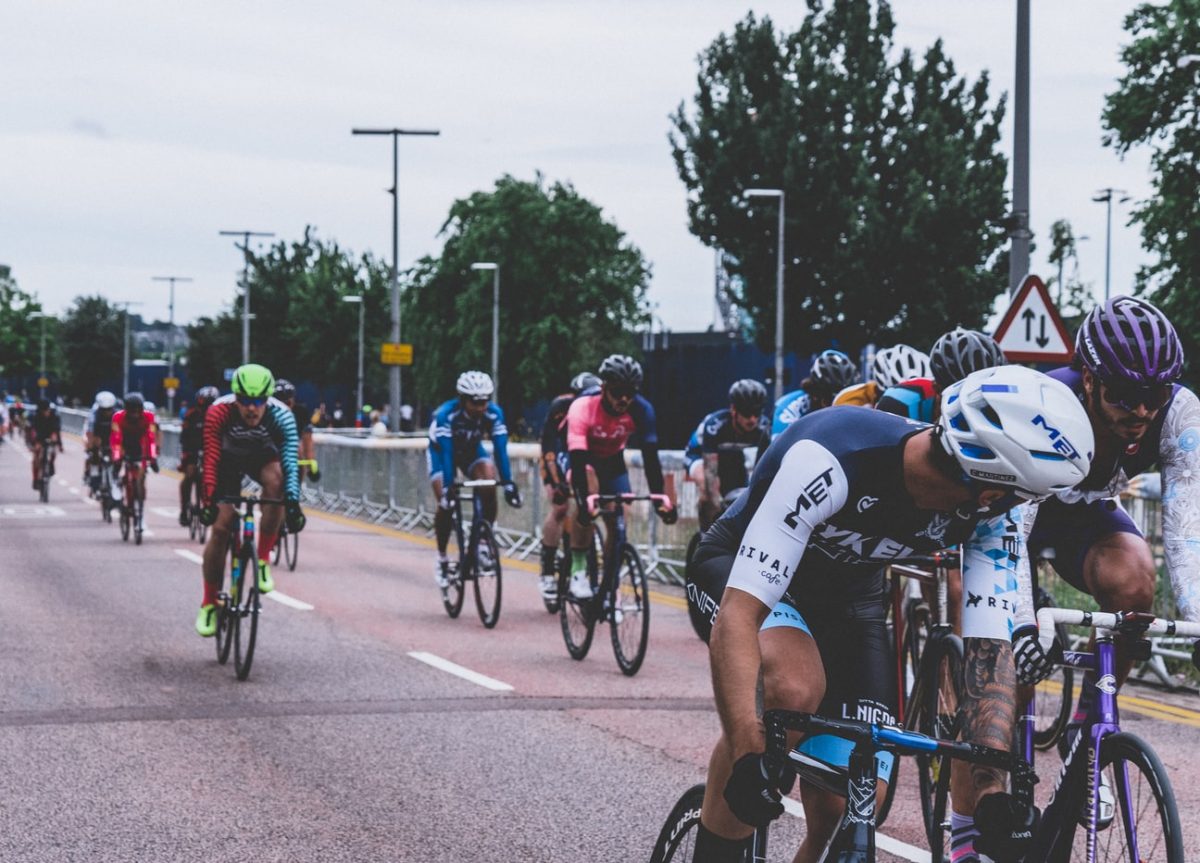Do you benefit from the drafting off a group at an Ironman even if you stay 10 meters away from other riders?
In many long course triathlon or time trial races, the rules require cyclists to stay 10 meters apart. If the 10-meter distances are really kept, it is not a real group in triathlon. In reality, however, there are of course many groups, especially where there is the greatest concentration of competitors and hundreds of athletes split up by the minute. But let’s assume that the 10-meter intervals are kept and a loose group is formed. Then the benefit is greater if the riders ride in a staggered fashion than if they ride in a line with 10-meter intervals. With regard to drafting, even a 10-meter distance still has a certain advantage, especially on flat roads and when riding slightly downhill. Even though the athlete in the front is pushing hard, you often have to brake slightly at the back to avoid hitting the group. A benefit also exists in the areas of race awareness and motivation. The more ambitious an athlete is on the road, the more he should try to find shelter in a group, so that he doesn’t lose the connection and can save energy. The difficulty here is that groups ride irregularly, often you have to overpace for a short time and ride a little faster than your current condition would allow. If this happens too often and too early in a race, it will take its toll later in the race. The pros often ride the first 30 km as if there was no tomorrow, with the goal of putting good riders in a slower bike group behind. But if the cycling time at an Ironman is six hours or more, this tactical aspect becomes much less important and the individual pacing is even more important. Then the goal is to eliminate as many unnecessary peaks and intensity differences as possible and to constantly run between 75 and 80 percent of maximum performance. With a good instinct you can get a lot out of it – the best tips:
- Ride rolling hills in such a way that other athletes are in front when you are going down, so you can benefit from slipstream. Downhill the aerodynamic aspect is very important.
- If the course changes direction, you have to check the wind conditions. If there is a cross or tail wind, ride more in front, look for a group in a headwind and follow with minimum distance.
- Assess other athletes correctly: If the athlete ahead of me is on my level, then follow, do not overtake and thus benefit from the slipstream. If he is much weaker, overtake immediately so that the rhythm is not lost. And if he is stronger on the flat, stay with him and only let him pull away in the mountains.
This Blog Article was made available to us by Fit for Life. Fit for Life is the Swiss magazine for fitness, running and endurance sports. Would you like to read such articles regularly? Then Click here.

